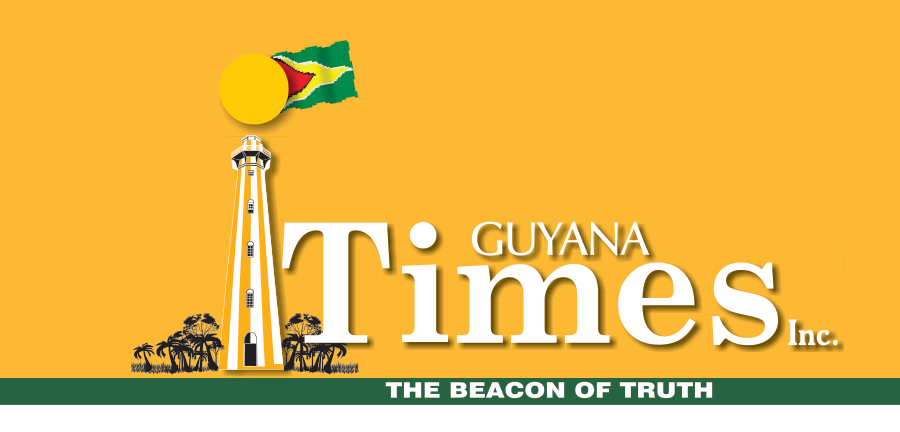Suspected poisoning
…Indigenous leaders worried about impact
Police ranks have been deployed into the Wakapao Amerindian Reservation to investigate the circumstances leading up to the suspected poisoning of a family which led to the deaths of a father and daughter.

This was revealed by G Division Commander, Khali Pareshram, who told this publication on Thursday that although no report has been formally made to any of the police stations, investigators are in the Wakapao settlements.
“I sent in ranks [on Monday] to visit the area. This is after the Toshao of that village/area and myself had a discussion on the matter. Based on this, I sent my ranks in but I do not know how long they will take to do their work in there and when they will return exactly since they have to do an in-depth investigation into the circumstances.”
According to Commander Pareshram, the only known cases of this suspected poisoning are those of the one family that has been affected and rushed to the Georgetown Public Hospital Corporation (GPHC).

“They are hospitalised but they were hospitalised in Essequibo and then were all referred to Georgetown. Everybody that was affected was hospitalised or died in the Georgetown Hospital. As far as I know, at this point, this is not widespread.”
On Wednesday, 76-year-old Wakapao resident, Edward Richards died at the GPHC after having been hospitalised for suspected poisoning. His death came days after his daughter, Selena Thomas, died.
Richards’ condition had worsened on Tuesday and as a result, he had to be transferred to the Intensive Care Unit. He died on Wednesday. Four other family members of the now dead man remain hospitalised at the city hospital. The entire family fell ill after reportedly consuming cassava, which they reaped from their farm.
Meanwhile, a post-mortem examination performed on Thomas on Wednesday was inconclusive and samples were taken to be sent overseas for further testing. A relative of the family told Guyana Times on Wednesday afternoon that the other family members are being treated for cyanide poisoning.

The relative expressed frustration over the mysterious circumstances which has left two of her family members dead without answers as to what really could have caused their demise. The disastrous ordeal started last week after Richards’ daughter, Selena Thomas, had baked some eight cakes of cassava bread which she and her household consumed and shared with family.
The relative explained that soon after eating the cassava, which they reaped from their farm, they complained of stomach pains then started to vomit.
“They were fine. But they ate cassava which they get from their farm. They prepared it as a meal and then they started to vomit and they were getting bad pains to their stomach. It was the only thing all of them eat the morning,” the distraught woman related.
The relative added that they reportedly fed the same food to two of their dogs – both of which later died. It is suspected that their farm had been contaminated with an illicit substance.
Indigenous staple
Meanwhile, several Amerindian leaders have since said that the Indigenous community has been consuming cassava bread and other cassava products for decades and are fully aware of the process of preparing cassava bread the correct way. The Indigenous leaders believe that the claim of cyanide poisoning by relatives are “irresponsible” and seeks to tarnish the Indigenous staple food which creates a major source of income for Indigenous communities.
Toshao of Santa Rosa Region One (Barima-Waini), Sharon Atkinson in an invited comment on the issue on Thursday stated that the Indigenous people of Guyana and South America that use bitter cassava are aware of the poisonous content and are knowledgeable of processing it.
She called on the Health Ministry to conduct a full investigation into the incident and make a full disclosure soon before speculations become widespread, thereby damaging the image of the products associated with cassava and as a result impacting negatively on the economic gains from those products which serve as a main source of income for Amerindians.
Toshao Atkinson also bashed the Health Department for not yet issuing an official statement on the incident, noting that this is allowing for speculation.
Meanwhile, Toshao of the village, Howard Cornelius took to social media to share his views on the issue while calling for an investigation into the incident.
“I will call for an investigation into the suspected food contamination involving a family in my community which has resulted in the death of a member of that family. Rumours have been spreading and fingers have been pointing and accusation are being made especially on social media by villagers themselves. The image portrayed about our village is not good and may affect the market and sales of cassava bread, the product many women in my village depend on to sustain their families,” Toshao Cornelius said in a Facebook post on Wednesday.
Ohio State University study
Meanwhile, a study by the Ohio State University in 2003 found that cassava is the third-most important food source in tropical countries, but it has one major problem; the roots and leaves of poorly processed cassava plants contain a substance that, when eaten, can trigger the production of cyanide.
The sweet varieties of cassava contain low quantities of hydrogen cyanide so detoxification prior to eating is normally not necessary. These are usually sold locally for household consumption. The bitter varieties of cassava have high hydrogen cyanide content, and must be processed before eating.
Discover more from Guyana Times
Subscribe to get the latest posts sent to your email.













